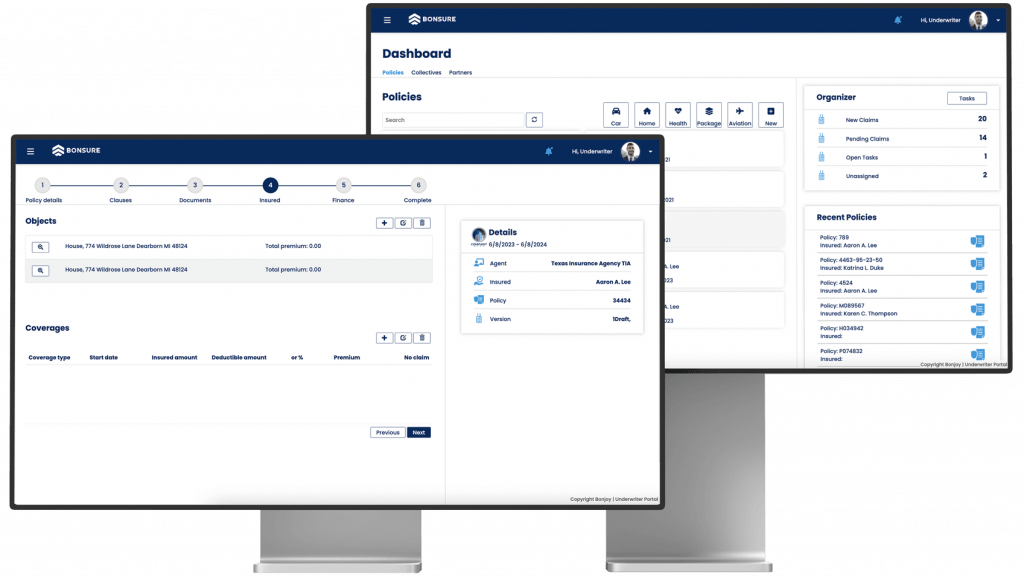TECHNOLOGY
Develop apps in days, and real business results fast
Everything you need to design, build, integrate, test, deploy and manage enterprise apps at scale
LOWCODE
What is Low-Code Development?
Low-code is a visual approach to software development. Low-code abstracts and automates every step of the application lifecycle to enable rapid delivery of a variety of software solutions. It breaks the traditional silos of business and IT to promote continuous collaboration.
Increased business demand for software solutions and a shortage of skilled developers have propelled the adoption of low-code development platforms to the forefront.

Achieve unparalleled
time-to-value
- Rapidly deliver apps that your business needs with the existing talent
- Improve developer productivity with low-code attributes, such as a development toolkit (based on developer experience), a visual user interface, reusable components, and more
- Enable faster decision making among cross-functional teams with baked-in collaboration tools
Build more at scale
- Develop a variety of solutions ranging from process automation apps to mission-critical systems modernization, without incurring heavy costs
- Deliver continuous improvements to end-users with engaging web, mobile, conversational, or immersive experiences
- Build maintainable solutions that are easy to scale on cloud-native architecture
Shape a new way of developing
- Break down silos to foster a strong business-IT partnership
- Empower more developers throughout the organization to build applications and contribute
- Stay agile to respond quickly to changing business and customer needs
The Value of Low-Code Development
Great software solutions create immense value for the business. They can help organizations drive new revenue, enhance customer satisfaction, mitigate risks, cut costs, and more. But constantly delivering impactful solutions is hard.
Perception
95%
of business and IT stakeholders agree IT involvement adds value
Reality
61%
of business stakeholders say less than half of their IT ideas are implemented
Solution
99%
of IT and business stakeholders agree their organization would benefit from the capabilities offered by low-code platforms
Delivered Outcome
$500K
additional revenue delivered by a UK-based waste management company via an eCommerce portal built on low-code
Who Can Build On Low Code?
Anyone with an idea can use low-code to build applications. However, low-code wasn’t made just for non-coders. Low-code offers a wide range of tools and capabilities that are differentiated to meet the specific needs of professional developers and business users.
Professional Developers
A recent Gartner survey states that 66% of low-code development platform users are professional developers from an enterprise IT department. At their core, professional developers want to build creative software solutions to solve complex problems. Low-code provides developers with a dedicated integrated development environment (IDE) to extend apps with custom code, consume data from multiple sources, build mobile apps, or leverage microservice architecture. Front-end, back-end, web, or mobile developers can all build apps for a variety of experiences — from start-to-finish — with low-code.
Citizen Developers
According to a recent Gartner report, 61% of organizations have or plan to have active citizen development initiatives. Business users prefer to build solutions on spreadsheets, desktop databases, etc. Left unchecked, this approach can create technical debt for companies. Instead, business and IT departments can partner together to build a formal citizen development initiative using a low-code platform. Low-code’s simplified development environment for business users allows them to build basic productivity apps, while IT still has visibility into the company’s app landscape.
Low-Code Platform Essentials
To truly leverage low-code benefits, organizations need a platform that adheres to the nine principles of low-code development and provides the ability to:
Empower a range of developers to build
A dedicated toolbox for every developer with built-in collaboration and reusable components. Openness and extensibility to build complex applications for professional developers.
Deliver engaging experiences to end-users
A single platform to build applications for the multiple touchpoints in a user journey — web, mobile (native, PWA, and hybrid), conversational or immersive—without investing in new talent.
Operate on a cloud-native architecture
A platform that simplifies operations through abstraction and automation—just like low-code development. Build solutions that are scalable, multi-cloud portable, and secure by default.
Frequently Asked Questions
Mendix Low-Code development adapts well to the Agile methodology with a suite of tools to foster collaboration and transparency throughout the application development lifecycle. The Mendix Platform Portal is the central hub for project and story management, communication, and feedback. These elements flow directly into the development environment and the application itself for users to navigate and address items directly and easily.
The best Low-Code tools are inclusive of the business and provide them tools to actively contribute and collaborate throughout the application development lifecycle. Mendix integrates collaboration into every facet of the platform, uses intuitive drag-and-drop development environments for creating engaging user interfaces and visual logic, and allows you to implement your own design language for applications to represent your brand.
Low-Code platforms allow developers to extend applications with their own coded enhancements. No-Code platforms apply constraints to the development environment limiting the user’s ability to extend their application beyond the vendor’s supplied solution. The Mendix platform is a governed platform supporting a spectrum of developers. Citizen developers use Mendix Low-Code tools to build productivity applications or start UI development on enterprise apps through a governed experience. Business and professional developers use Mendix Low-Code tools to create enterprise applications, REST APIs, microservices and more. When custom code is necessary, professional developers encapsulate custom code they write into shareable modules for the whole development team to drag-and-drop into their applications.
Low-Code lends itself well to the agile methodology of application development. Mendix supports agile development with an integrated project management application in the Platform Portal. Team members add stories to an application which flow into the development environment. While agile sprints result in a culmination of work and feedback over a period of time, Mendix feedback mechanisms promote iterations during sprints increasing development speed and accuracy, and reducing time to value.
Mendix formed in 2005 to transform the way lines of business collaborate with IT development teams to deliver applications while making it easier and faster for developers to create applications using a model driven approach. Both Forrester and Gartner have validated our vision with Gartner moving our high productivity application platform as a service (hpaPaas) from a niche player in 2014 to the leaders quadrant for the second consecutive year in 2018.
As the only application development platform to support the spectrum of developers within the enterprise with purpose built tools, integrated collaboration and cloud native architecture, Mendix leads the way for the rest of the category.
Low-Code is a catalyst for digital transformation in organizations because visual, model driven development presents logic in a language anyone in the application lifecycle can understand. Mendix uses this common language with integrated collaboration tools to help the development team (which includes the business) to reach alignment early and often in the application lifecycle. Developers are more efficient because the tools Mendix provides increase quality and consistency across the development team. The result is application throughput increases, delivered applications accurately drive positive business outcomes and the business is more likely to adopt the solutions because they have a greater investment and understanding of the process.
Visual development is a more intuitive way to build applications. Using model-driven development concepts to visually define the user interface, logic, and data model, Mendix empowers a spectrum of developers from citizen developers to professional developers to develop native mobile applications, web applications, APIs, microservices, and more. Because the development environment is visual and model driven, users gain proficiency in a fraction of the time it takes to master a traditional language. And if hand coding is required, professional developers can encapsulate logic and functionality into modules for the rest of the development team to reuse in their projects. On average, customers realize six to ten times productivity improvement using Mendix over traditional hand coding approaches to application development.
High productivity application platform as a service (hpaPaaS) is a term popularized by Gartner to categorize platforms that support declarative, model driven design and one-click deployment. hpaPaaS solutions include rapid application development (RAD) capabilities along with application deployment and execution services in the cloud. Both hpaPaaS and Low-Code provide levels of abstraction with an integrated set of tools to accelerate application delivery.
Rapid application development (RAD) is a concept that products can be developed faster and of higher quality through: Gathering requirements using workshops or focus groups; prototyping and early, reiterative user testing of designs; the re-use of software components and more. Mendix is a Low-Code development platform facilitating the practical implementation of RAD with visual development capabilities to enable rapid, iterative and collaborative application design and development. With Mendix business and IT align on requirements through integrated project management tools modeled after agile, they share prototypes to gather feedback and refine requirements, and reuse models and components to speed development and enable more developers.
Low-Code platforms abstract away application development decisions like what database to use, the language to write the back end, and the front-end framework to create the user interface and experience. Mendix enables anyone – from your most senior developers to business analysts with no programming experience – to build enterprise grade applications at speed, collaborating across the organization with greater transparency, and with control using a governed platform promoting quality and consistency every step of the way.
With visual development, one-click deployment, reusable components, and alignment with Agile methodologies, low-code development platforms allow development teams to develop and deploy applications faster. This in turn allows organizations to accelerate their time-to-market speed, increase their IT output, all while optimizing IT productivity.









